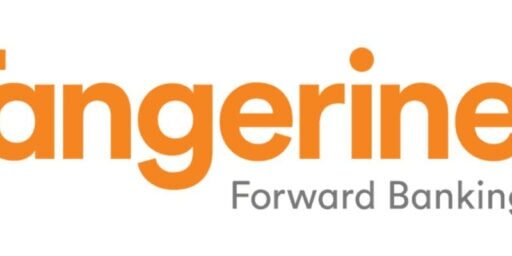RRSP vs IPP for Canadian Business Owners
In my recent articles about paying yourself in salary vs dividends from a CCPC, as well as investing within a Canadian corporation, we explored the tradeoffs involved in trying to optimally manage both your personal and business’s finances.
The final step in that journey is deciding whether to set up an Individual Pension Plan (IPP) or Registered Retirement Savings Plan (RRSP).
IPPs were designed with high-earning professional corporate owners in mind such as doctors, pharmacists, lawyers, dentists, and accountants. That said, they can be used by anyone with a CCPC who pays themselves a relatively high salary. These types of small business owners are often called “High income T4 business owners” or something similar.
The Ontario Securities Commission states: “IPPs are a complex retirement savings strategy – consider professional advice from a reputable advisor before setting one up.”
Here’s the thing: Most professional advice in Canada is going to go something along the lines of, “I’ll tell you what investments to choose, they’ll be the best ones, I’ll also do some other great, stuff – and best of all – I’ll do it for free, it won’t cost you anything.”
Of course there is no such thing as a free lunch! That type of advice (which is what 95%+ of Canadian advisors use) leads to advisors trying to sell clients all types of expensive insurance products, plus directing their money into high-commission investment products that give advisors big kickbacks.
High-earning professionals are a VERY lucrative group for these type of traditional financial advisors because the advisor companies know that as they progress in their careers, these professionals are going to accrue big investment portfolios – which can then be siphoned away via high commissions.
That’s why you’ve seen us recommend Objective Advisors when we looked at the market for best financial advisors in Canada. I was personally drawn to the company when I read their motto: “The only thing we sell is our time.”
The fee-only, upfront-quote model is really the only ethical way to provide financial advice in Canada. If you’re an incorporated professional considering setting up an IPP you are an incredibly juicy target for traditional investment advisors. Make sure you understand exactly how you will be paying your advisor, and Google what impartial 3rd-party commenters have to say about fee-only advice in Canada before you commit!
What is an IPP?
An IPP is a retirement plan setup by an employer, usually created for a single person. When it comes to a small business, often the owner is the person the IPP is being set up for, with the corporation being the employer. This essentially means you can be both the employer and the employee. Each IPP must qualify for registration as a pension plan under the Income Tax Act.
IPP contributions are made by the corporation, and consequently are a pre-corporate tax deduction.
If you are paying yourself a salary of more than $120,000 or so, and are over the age of 40, then an IPP is worth your consideration. Why over the age 40? It’s a bit complicated to fully explain, but the gist of it is that the IPP contribution rules are based on actuarial rules.
Those rules dictate that after the age of 40, you are able to contribute significantly more to your IPP than your RRSP. At 40, the difference is about $2,500, but by 50 the annual contribution difference rises to over $18,000!
There are also some unique IPP advantages that we’ll outline below. That said, if you want to keep things simple, or you are taking a salary more in the sub-six-figures range, there is absolutely nothing wrong with sticking to an RRSP!
RRSP vs IPP Comparison: Pros and Cons
| RRSP (Registered Retirement Savings Plan) | IPP (Individual Pension Plan) | |
| Contribution Limits | Up to 18% of previous year’s income, with a maximum limit | Higher contribution limits, especially for those over 40 |
| Control over Investments | Full control over investment choices | Control over investment selection, but subject to pension rules such as having no more than 10% of assets in a single security |
| Creditor Protection | Limited creditor protection | Strong creditor protection |
| Pension Income Splitting | Contributions are tax-deductible | Contributions are tax-deductible |
| Required Withdrawals | Mandatory withdrawals at age 71 | Mandatory withdrawals based on actuarial valuation |
| Cost of Setup and Maintenance | Low setup and maintenance costs | Higher setup and maintenance costs |
| Annual Fees | Generally low annual fees (probably $0 if managed correctly) | Higher annual fees |
| Suitability | Suitable for all Canadians | Suitable for incorporated business owners/executives, especially those who anticipate transferring wealth to family members working in the corporation |
IPP Advantages vs an RRSP
The main advantages of an IPP over an RRSP are:
1) After age 40, IPPs allow for significantly more contribution room.
2) You are protected against creditors in many situations where your RRSP could be included in a settlement process.
3) It is easier to create a generational transition plan for wealth inside an IPP, and oftentimes the estate will be taxed at a lower rate upon death due to the tax burden being shifted from the individual who has passed, to the beneficiaries.
IPP Disadvantages vs an RRSP
1) By far the biggest disadvantage of using an IPP instead of an RRSP is the cost. It isn’t cheap to set one up properly, and the ongoing costs are also substantially higher due to considerations such as the actuarial fees every three years.
2) There isn’t a spousal contribution option in an IPP like there is with an RRSP.
3) IPP regulations are more extensive and can vary from province to province, whereas RRSPs are governed strictly at the federal level.
IPP Contribution Rules
The contribution rules for an RRSP are pretty straight forward:
Each year you get a certain amount of contribution room. That contribution room has a maximum of 18% of your taxable earnings, up to a maximum of $31,560 in 2024. Any unused RRSP can be carried forward to use in future years.
The contribution rules for an IPP are more complicated, and you should understand upfront that contribution to either an RRSP or an IPP eliminates contribution room for the other account. (Although it is perfectly legal to have both types of accounts.)
When your corporation sets up IPP contributions they must be certified by an actuary. This stems from the fact that an IPP is going to function as a defined benefit pension plan. Each year, actuaries look at investment returns, interest rates, and longevity changes, and make changes to how corporations need to set up defined benefit pension plans. Consequently, contribution room changes inside of your RRSP each year as detailed below.
IPP Maximum Contribution Rates
| Age | Contribution Rate as Percentage of Taxable Earnings |
| 45 | 20% |
| 50 | 22% |
| 55 | 24% |
| 60 | 26% |
| 65 | 29% |
| 70 | 26% |
Every three years the corporation must get an actuarial test done on the IPP in order to make sure it can meet future pension obligations.
Each province has its own rules around the establishment of IPPs, which is why I recommend checking in with a professional planner in order to get these set up correctly from day one. For example, if your corporation has cash flow difficulties in a given year and can’t keep up with IPP contributions, each province has its own rules around if the corporation can stop making contributions.
The automated nature of IPP contributions means that the account is really geared towards corporations that have stable profits (as most professional corporations do).
IPP Withdrawal Rules
IPPs are defined benefit pension plans that must make periodic pension payments as outlined in the pension agreement. There are three main ways to setup IPP withdrawals and/or payments:
1) Use your IPP to purchase an annuity from an insurance company.
2) Commute the value of your IPP and transfer the money to a LIRA. (Be aware that if this commuted value exceeds the Income Tax Act’s transfer limit, the excess amount is taxable.)
3) Your corporation can remain open indefinitely in retirement and pay the required defined benefit pension amount as defined by the pension agreement.
Depending on which of these options you choose, a survivor pension and/or a guarantee period can be included in your IPP withdrawal plan.
You can “unlock” your IPP way before you turn 65. You can opt to retire and have your IPP begin paying your pension at 50 if you want, or wait as late as age 71.
What Investments Should I Put in my IPP vs RRSP?
Both the IPP and the RRSP are very open investment vehicles which allow users to invest in the most common types of assets such as stocks, bonds, ETFs, mutual funds, etc.
The one interesting difference is that IPP rules around the concentration of investments are a bit more restrictive. Again, this stems from the fact that IPPs are a bit more regulated by actuarial rules. Consequently, no more than 10% of the total investment portfolio can be in any single security.
To be honest, this type of diversification is already pretty common if you invest using ETFs and mutual funds, so it’s unlikely to have a major impact on your decision.
RRSP vs IPP – Which is Better?
For most CCPC owners the simplicity of paying yourself a salary and then maxing out your RRSP and TFSA is going to make the most sense – especially before you hit 40.
That said, if you are ready to save $30,000+ every single year, own a corporation, and are over 40, then the substantially higher costs of an IPP might be worth it. It’s worth noting that those higher costs are deductible to your corporate taxes. It’s also the case that if you have a company with fluctuating earnings, than the automated nature of IPP contribution might not be a great fit for you.
Another major factor would be the probability that you will want to leave a substantial estate to the next generations. An RRSP is set up to provide personal benefits, but upon the death of the second partner in a marriage, the assets in the RRSP will be fully taxed. Whereas there are several options for a more tax-efficient transfer of wealth within an IPP.
With the CCPC tax changes of 2019, as well as the more recent capital gains tax changes, using an IPP is likely to become a lot more popular than simply opening up a vanilla brokerage account to invest within your corporation. With no reduction to the small business tax deduction, and no additional capital gains rules to worry about, the IPP will make a lot of sense in those situations.
The bottom line is that if you’re over 40, and have a company that consistently makes enough profit that you find yourself saving $30,000+, then you should ask a fee-only financial planner if an IPP makes sense for you. I actually lean toward not having one in most cases, as they are a pain to set up and maintain. Then again, I’m not a doctor making $500,000+ in profits every year!
IPP FAQ
I've Completed My Million Dollar Journey. Let Me Guide You Through Yours!
Sign up below to get a copy of our free eBook: Can I Retire Yet?










